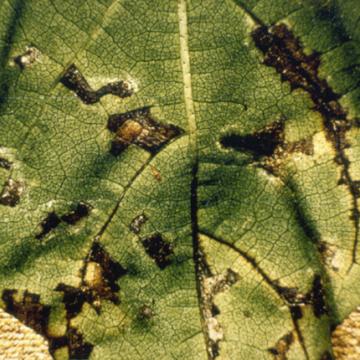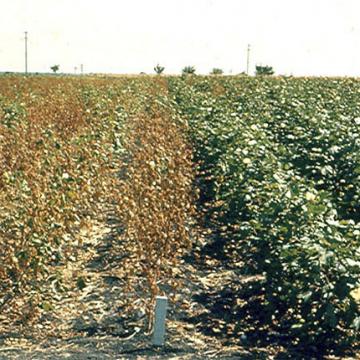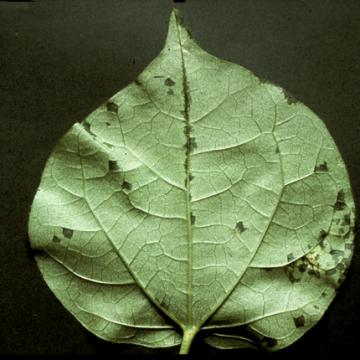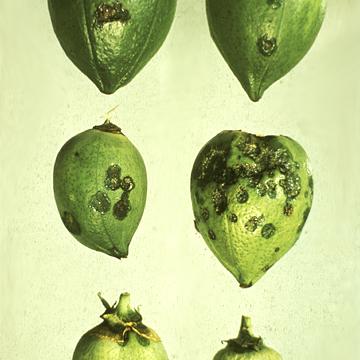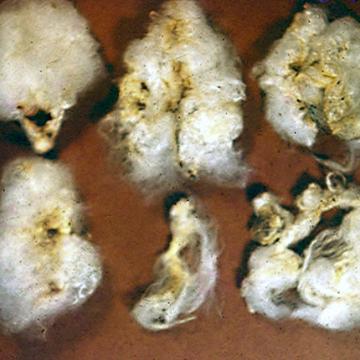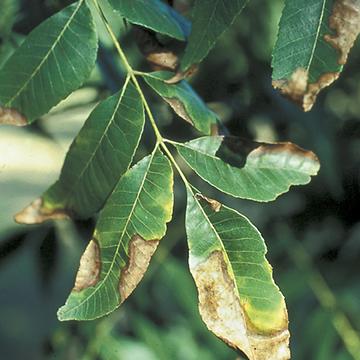DISEASE: Bacterial blight (Angular leaf spot)
HOST: Cotton
Leaf with advanced stage of blight.
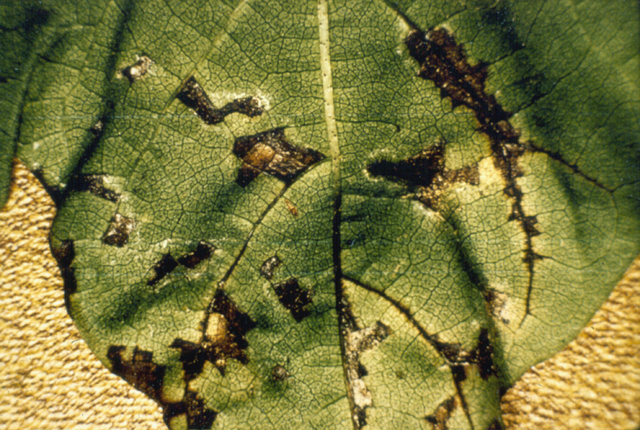
Bacterial blight (Angular leaf spot) | Cotton
DISEASE: Bacterial blight (Angular leaf spot)
HOST: Cotton (Gossypium barbadense)
PATHOGEN: Xanthomonas citri subsp. malvacearum
PATHOGEN SYNONYM: Xanthomonas campestris pv. malvacearum
SOURCE: M. Shurtleff
DISEASE: Bacterial blight (Angular leaf spot)
HOST: Cotton
Highly susceptible (left) and resistant (right) cotton cultivars. The black arm stage of the disease is the most serious and occurs when bacteria invade petioles and then stems.

Bacterial blight (Angular leaf spot) | Cotton
DISEASE: Bacterial blight (Angular leaf spot)
HOST: Cotton (Gossypium barbadense)
PATHOGEN: Xanthomonas citri subsp. malvacearum
PATHOGEN SYNONYM: Xanthomonas campestris pv. malvacearum
SOURCE: APS
DISEASE: Bacterial blight (Angular leaf spot)
HOST: Cotton
Characteristic early symptoms are water-soaked leaf spots and water-soaking along veins.
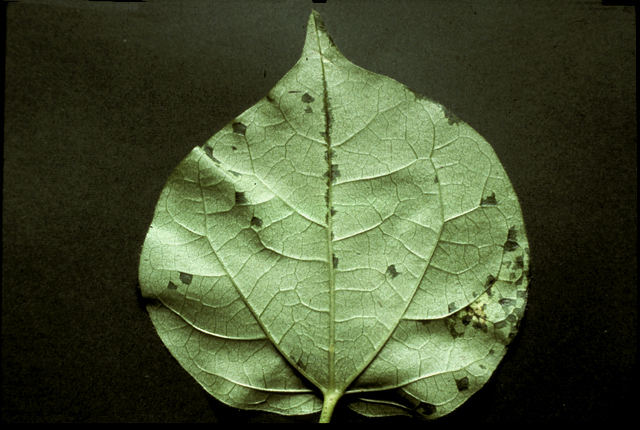
Bacterial blight (Angular leaf spot) | Cotton
DISEASE: Bacterial blight (Angular leaf spot)
HOST: Cotton (Gossypium barbadense)
PATHOGEN: Xanthomonas citri subsp. malvacearum
PATHOGEN SYNONYM: Xanthomonas campestris pv. malvacearum
SOURCE: A. Hayward
DISEASE: Bacterial blight (Angular leaf spot)
HOST: Cotton
Leaf with dark, angular leaf spots. Systemic invasion causes blackening of midribs.
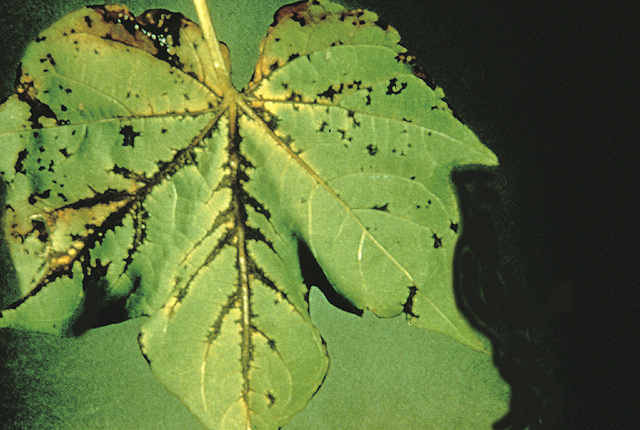
Bacterial blight (Angular leaf spot) | Cotton
DISEASE: Bacterial blight (Angular leaf spot)
HOST: Cotton (Gossypium barbadense)
PATHOGEN: Xanthomonas citri subsp. malvacearum
PATHOGEN SYNONYM: Xanthomonas campestris pv. malvacearum
SOURCE: APS
DISEASE: Bacterial blight (Boll rot)
HOST: Cotton
Boll rot first appears as raised, water-soaked lesions, which become sunken and turn brown to black with time.
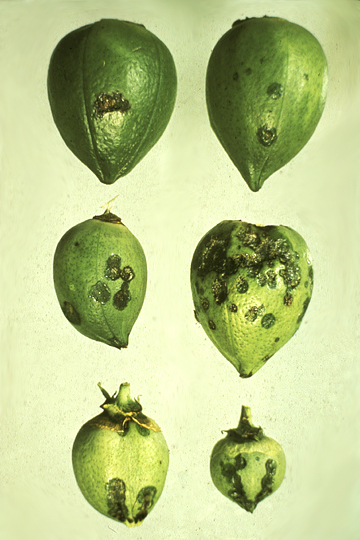
Bacterial blight (Boll rot) | Cotton
DISEASE: Bacterial blight (Boll rot)
HOST: Cotton (Gossypium barbadense)
PATHOGEN: Xanthomonas citri subsp. malvacearum
PATHOGEN SYNONYM: Xanthomonas campestris pv. malvacearum
SOURCE: A. Hayward
DISEASE: Bacterial blight (Boll rot)
HOST: Cotton
Infection of bolls causes premature opening and increased susceptibility to secondary, saprophytic microorganisms that cause rot. Note discolored cotton.
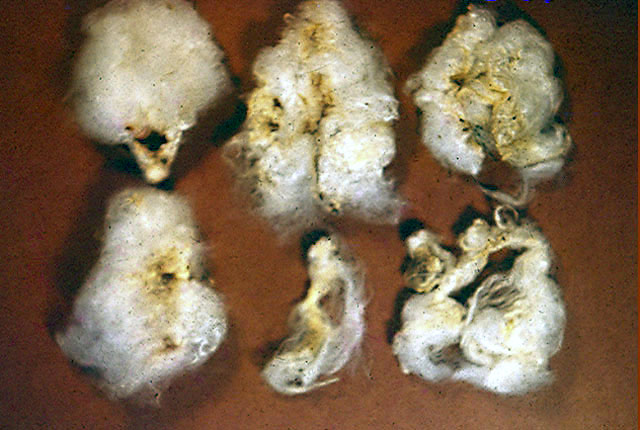
Bacterial blight (Boll rot) | Cotton
DISEASE: Bacterial blight (Boll rot)
HOST: Cotton (Gossypium barbadense)
PATHOGEN: Xanthomonas citri subsp. malvacearum
PATHOGEN SYNONYM: Xanthomonas campestris pv. malvacearum
SOURCE: APS
DISEASE: Bacterial leaf scorch
HOST: Pecan
Pecan with necrotic scorched leaves with distinct dark lines between healthy and diseased tissues.
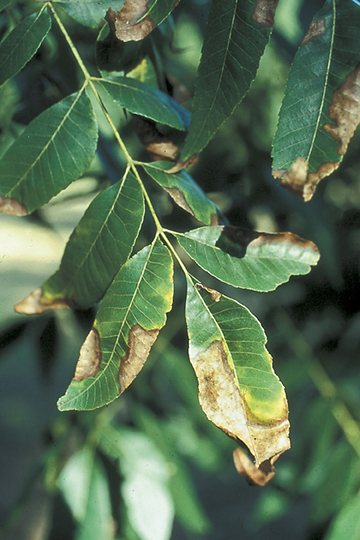
Bacterial leaf scorch | Pecan
DISEASE: Bacterial leaf scorch
HOST: Pecan (Carya illinoinensis)
PATHOGEN: Xylella fastidiosa
SOURCE: T. Brenneman
DISEASE: Bacterial leaf spot
HOST: Snapdragon
Leaves with large necrotic areas with brownish centers and purplish margins. Lesions are slightly sunken.
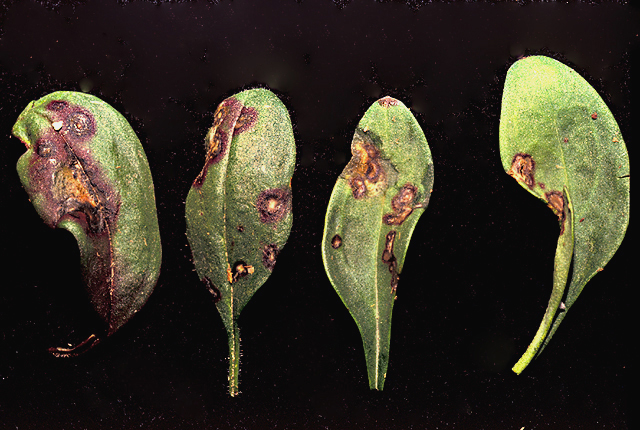
Bacterial leaf spot | Snapdragon
DISEASE: Bacterial leaf spot
HOST: Snapdragon (Antirrhinum majus)
PATHOGEN: Pseudomonas syringae pv. antirrhini
SOURCE: R. Raabe
DISEASE: Bunch disease
HOST: Pecan
Pecan exhibiting bunch symptoms at ends of branches. This disease is thought to be caused by a phytoplasma similar to the walnut bunch pathogen in the X-disease group.
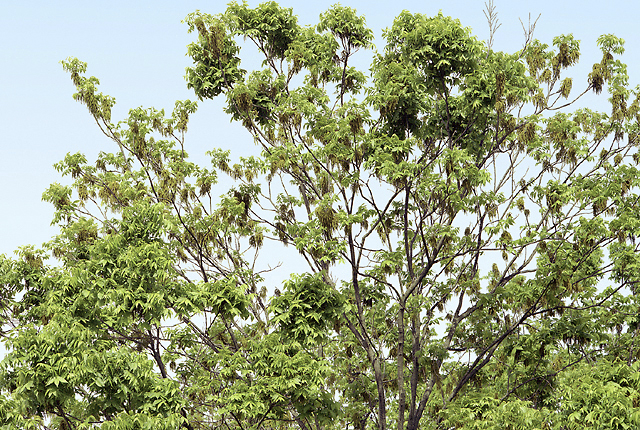
Bunch disease | Pecan
DISEASE: Bunch disease
HOST: Pecan (Carya illinoinensis)
PATHOGEN: 'Candidatus Phytoplasma pruni'
PATHOGEN SYNONYM: Phytoplasma X-disease group
SOURCE: W. Sinclair


